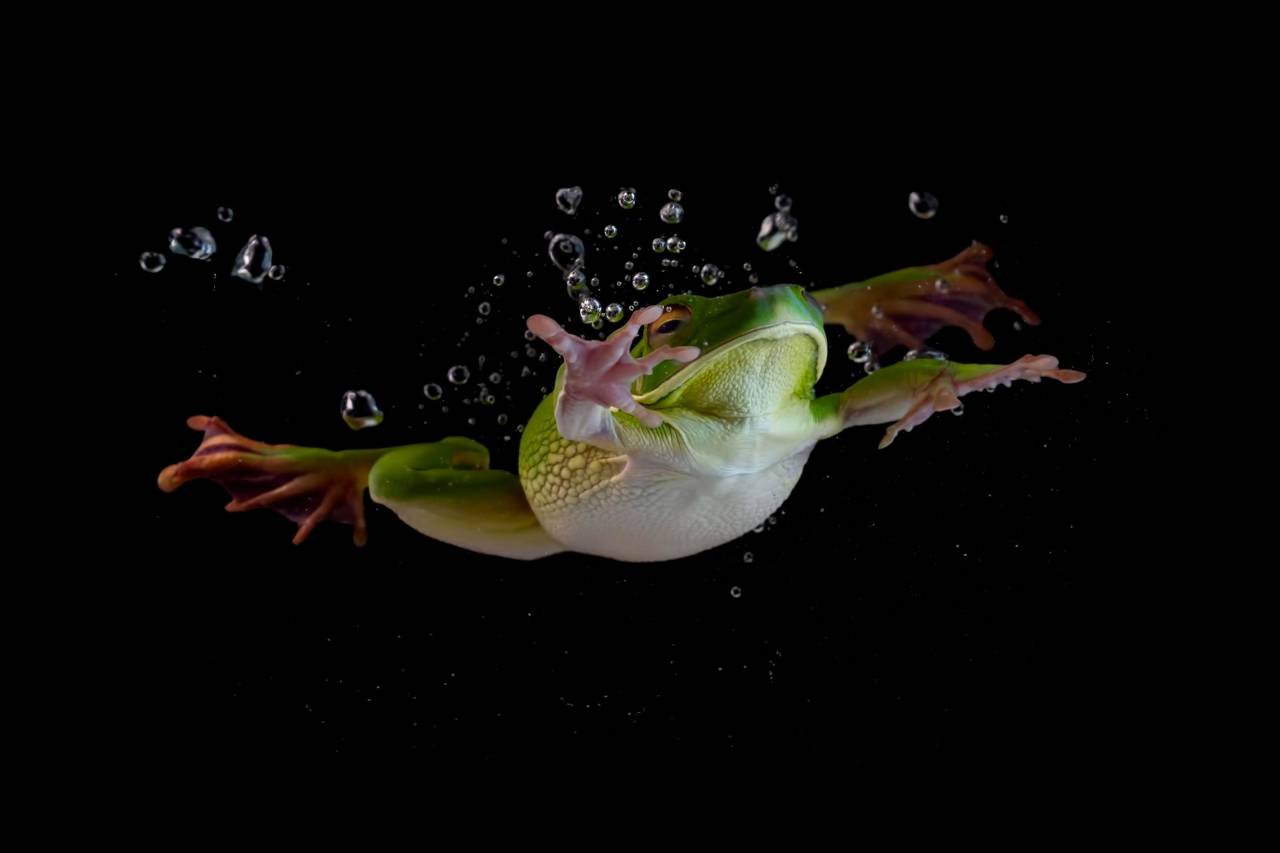Frogs and water share an intrinsic connection vital to the survival and thriving of these remarkable amphibians. As creatures of dual lives, frogs have evolved to exploit both terrestrial and aquatic environments, yet water remains a critical element throughout their lifecycle. This article delves into the symbiotic relationship between frogs and water and explores why frogs are predominantly freshwater dwellers.
The Role of Water in a Frog’s Lifecycle
Water plays a crucial role in every stage of a frog’s lifecycle:
Eggs and Tadpoles
Frogs typically lay their eggs in water or very moist environments. The eggs lack a hard shell and are encased in a jelly-like substance that requires a moist habitat to prevent desiccation. Upon hatching, the larvae, known as tadpoles, live entirely in water. Tadpoles have gills for breathing and tails for swimming, relying on aquatic environments for survival as they grow and develop.
Metamorphosis and Adult Life
As tadpoles undergo metamorphosis, they develop lungs and limbs, transitioning to adult frogs capable of living on land. However, even terrestrial frogs need access to water to maintain skin hydration and support vital physiological processes, such as respiration through their permeable skin. Furthermore, many adult frogs return to water for breeding, indicating the ongoing importance of aquatic habitats.
Freshwater Habitats: The Preferred Environment
Frogs are predominantly found in freshwater habitats such as ponds, lakes, streams, and wetlands. These environments provide the necessary conditions for breeding and development, while supporting the frogs’ skin moisture needs. Freshwater ecosystems are rich in biodiversity, offering ample food sources such as insects and small invertebrates, which are essential to a frog’s diet.
Why Frogs Avoid Saltwater
Frogs are generally not adapted to live in saltwater environments. Several factors contribute to this preference for freshwater:
- Permeable Skin: Frogs have highly permeable skin, allowing them to absorb water and oxygen from their environment. In saltwater, the high salinity can lead to dehydration through osmosis, making it challenging for frogs to maintain the necessary balance of bodily fluids.
- Osmoregulation Challenges: Frogs lack the physiological adaptations needed to regulate salt levels in their bodies effectively. Unlike marine animals, frogs do not possess specialized glands or organs to expel excess salt, resulting in potential toxicity in saltwater.
- Breeding Environment: Frog eggs and tadpoles are particularly sensitive to salinity. The osmoregulatory stress of a saline environment can impair successful development, impacting reproduction and population sustainability.
While there are no entirely saltwater-adapted frog species, some species can tolerate brackish environments—areas where freshwater and saltwater mix—although this is not common.
Conservation and the Importance of Water
Preserving freshwater habitats is crucial for frog conservation. Wetland destruction, pollution, and climate change threaten these vital ecosystems, posing risks to amphibian populations worldwide. Conservation efforts aimed at protecting water resources and aquatic habitats are essential for ensuring the continued survival of frogs and the overall health of their ecosystems.
FAQs About Frogs and Water
Why do frogs primarily live in freshwater environments?
Frogs thrive in freshwater due to their permeable skin, reliance on aquatic habitats for breeding, and the challenge of regulating salt levels in saltwater environments.
Can any frogs live in saltwater?
Although no frogs are fully adapted to saltwater, some species can tolerate brackish water, where freshwater and saltwater intermingle.
What role does water play in a frog’s lifecycle?
Water is essential for frog eggs and tadpoles, supporting breeding, development, and, in many cases, adult hydration and respiration.
How do environmental changes affect frogs and their habitats?
Pollution, climate change, and habitat destruction threaten freshwater ecosystems, impacting frog populations by reducing viable habitats.
What conservation efforts are critical for protecting frogs?
Conservation measures include preserving wetlands, reducing pollution, and protecting water quality, which are vital for safeguarding frog habitats and their broader ecosystems.

